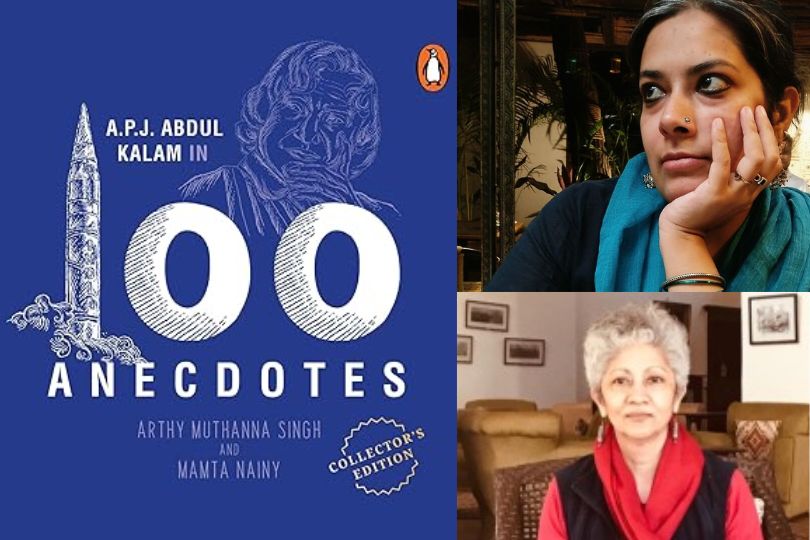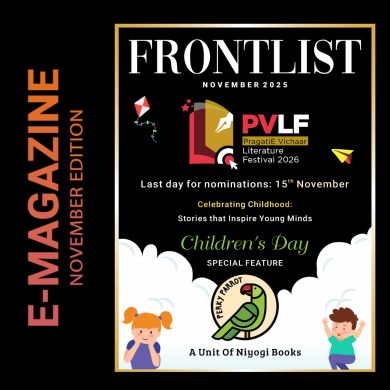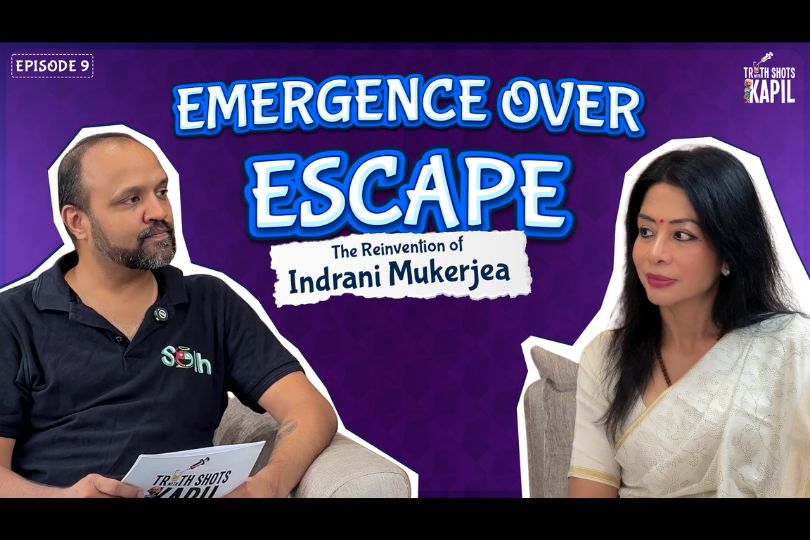Interview with Arthy Muthanna Singh and Mamta Nainy, Author of “APJ Abdul Kalam in 100 Anecdotes"
Explore an exclusive interview with Arthy Muthanna Singh and Mamta Nainy, authors of 'APJ Abdul Kalam in 100 Anecdotes' on Frontlist.on Nov 28, 2023

Frontlist: Can you tell us the inspiration behind "APJ Abdul Kalam in 100 Anecdotes" and "Magic in Marble: Building the Taj with Attaullah"?
Arthy & Mamta: Dr APJ Abdul Kalam has always been someone we have admired. His life was not a bed of roses. He had to struggle a lot to achieve what he did in his lifetime. So, when it came to picking someone who inspired us, it was an easy task. We want this easy-to-read book to serve as a ready-reckoner for our readers. Hopefully, they will get inspired by his life story like we did.
The two-stories-in-one-book of Magic in Marble is the first in a series that we hope to bring out with Puffin and INTACH Hecs as co-publishers, focusing on stories based on famous monuments around the country. And since the Taj Mahal is our most famous and personal favorite, we decided to come out with a book on it first. Moreover, we felt that not many books for children were available on this subject, combining historical fiction with contemporary fiction through the eyes of Attaullah and Aradya, respectively.
Frontlist: What inspired you to write "APJ Abdul Kalam in 100 Anecdotes"? Also, what was the most fascinating aspect of writing about A.P.J Abdul Kalam?
Arthy & Mamta: As we mentioned earlier, APJ Abdul Kalam was someone we had always admired. Penning a book on him was a natural choice when planning a Collector's Edition series of books on eminent Indian personalities. The most fascinating aspects of APJ Abdul Kalam's life were those unknown to the public. It gave us an idea of how diverse his interests were. While his milestones in science are well-known and well-documented, his love for classical Carnatic music, classical literature, and Tamil poetry was not. He greatly admired M.S. Subbalakshmi's melodious voice and played the veena, a traditional South Indian string instrument, throughout his life.
Frontlist: What led to the unique format of 100 anecdotes for Dr. Kalam's biography, and how do you think this format engages young readers?
Arthy & Mamta: When we first mooted the idea for this particular series to Penguin RandomHouse, it was because we had wanted to showcase the lives of luminaries of our recent past and present whom we admired in a simple, unique way by using a collection of anecdotes as a biographical device, which hadn't been explored before. The book loosely follows APJ Abdul Kalam's biographical timeline and is, in fact, the fourth book in the special Collector's Edition series. The earlier books, also authored by us, were on M.K Gandhi, Satyajit Ray, and His Holiness the Dalai Lama.
While the anecdotes in the book are short, free-standing, with a nub or point at the center, together, they give an overview of his life and reflect the sheer multifariousness of
Dr APJ Abdul Kalam's personality—as someone who feels deeply and acts decisively, who's gentle yet steely, who lets his life speak and dares to listen, someone who might not endow you with all the answers but offers open questions that people are pushed to ponder on.
We made a special effort to feature anecdotes from Dr. APJ Abdul Kalam's life where he had his moments of doubts, fears, and insecurities and how he learned to channel these into action—in a way that young readers could relate to these anecdotes and feel that the costumes were interchangeable. The book also provides intricate details of space research and creates an approachable timeline of the Indian space program. The book also encourages the development of scientific temperament in young readers and sparks excitement about space.
Frontlist: "Magic in Marble" is not only entertaining but educational. How do you envision teachers and parents using this book to teach children about Indian history and culture?
Arthy & Mamta: The attempt with this book was to sort of free history from dusty dates or dustier facts and encourage a genuine engagement with it by underscoring the storytelling aspect of history. By using historical fiction in conjunction with contemporary fiction, the book tries to capture the life and times of the people who created this magnificent monument while also talking about the changes that the monument has seen over the years, the multiple threats it is facing, and the urgent need to preserve it.
The unique format will allow young readers to draw connections between the past and present more efficiently, which can help elicit empathy and encourage them to do their bit. The idea is also to promote an early interest in history and architecture and draw the readers' attention to how sustainability was always a prime consideration for many of the Mughal monuments and how each design element was a response to the climate of the area and the gardens around these monuments were not mere patches of greenery but were considered primarily as architectural settings.
Frontlist: Aradya's adventure focuses on preserving the Taj Mahal. How do you believe her story inspires the younger generation to appreciate and protect their cultural heritage?
Arthy & Mamta: As a first-time visitor to the Taj Mahal, we wanted to convey Aradya's feeling of awe and wonder at beholding this magnificent monument, along with her feeling of concern for the present-day problems that the monument is facing, based on the information she acquires from her father who is a conservationist. We felt that by highlighting some of the more obvious problems that the Taj Mahal is facing, readers would become aware that this monument (and every monument) needs constant care and upkeep. We want children to feel that the Taj Mahal is their monument, too, a sense of ownership. While there is not much that a child can do practically, just the awareness of the preciousness of our past is what we hope our young readers will imbibe.
Frontlist: "Magic in Marble: Building the Taj with Attaullah" is beautifully illustrated. Can you share more about collaborating with the illustrator and how the illustrations enhance the storytelling?*
Arthy & Mamta: When we started working on this book, we knew that we wanted a heavily illustrated book because illustrations can pack in a lot of details that are sometimes difficult to put in the text, such as the kind of clothes that people wore at that time or the kind of food they ate or the kind of houses they lived in. Also, sometimes artists leave trails of breadcrumbs in the details of the illustrations that can lead young readers to these other worlds of narratives, for they read the illustrations even before they read the story. We wanted that to happen with this book.
Also, in terms of the art styles, we have used entirely different styles to enhance children's visual literacy. So, for the historical fiction part of the book, the artist has used a style inspired by the Mughal miniatures. You will find the use of many profile portraits, bold architectural modeling, strong lines that define the foliage and the trees, and a vivid color palette in the illustrations, which are all characteristic features of Mughal miniatures. The illustrations for contemporary fiction, on the other hand, are more graphic and modern.
Frontlist: How do you believe these books contribute to the understanding of Indian history and culture among young readers?
Arthy & Mamta: Monuments are essential repositories of oral and community histories, which we have tried to capture in the book. We think the book works on various levels—it tells us the story behind the construction of the Taj Mahal. For a younger audience, it might be fascinating to visualize what it would have been like in those years when the Taj Mahal was under construction. Second, the book details the construction process of the Taj Mahal and gives insights into the lives of those who created it. Third, the book talks about how sustainability was always a significant consideration for the Mughal monuments, and the architects tried to control the microclimate around the building with the help of trees and water.
Also, by giving an insight into the past, we hope the readers realize that the Taj Mahal is not just a piece of history but also a piece of art. And how much of its magic will disappear if we don't do our bit to preserve it? We also think that children are ready to care and are by default. What is perhaps needed is to get them excited about conservation. So, the book's purpose is to reinvent how we engage with our heritage, especially built heritage.



.jpg)






.jpg)

.jpg)
.jpg)
.jpg)
.jpg)
.jpg)
.jpg)

.jpg)









Sorry! No comment found for this post.